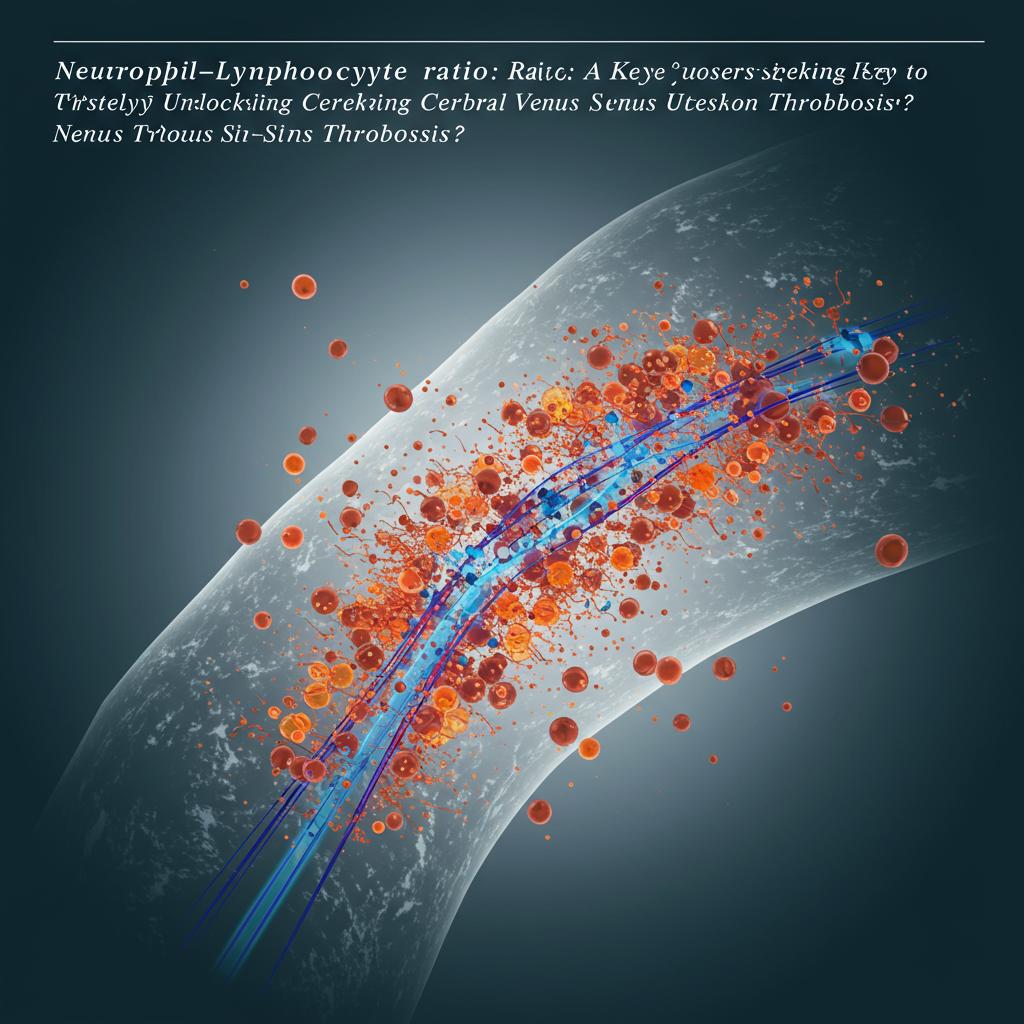
Ever felt a sudden, severe headache that just wouldn’t quit? It’s crucial to take headaches seriously, as they can sometimes signal a more complex issue, such as cerebral venous sinus thrombosis (CVST). CVST is a rare but serious condition where a blood clot forms in the veins that drain blood from the brain. Diagnosing it can be tricky, and that’s why researchers are always looking for new tools to help. A recent study explored whether a simple blood test, the neutrophil-lymphocyte ratio (NLR), could offer clues in diagnosing CVST. Let’s break down what they found and why it matters.
Think of neutrophils and lymphocytes as two types of white blood cells that are part of your immune system’s army. Neutrophils are the first responders, rushing to the scene of infection or injury. Lymphocytes are more like specialized units, playing a key role in long-term immunity. The NLR simply compares the numbers of these two cell types. It’s calculated by dividing the neutrophil count by the lymphocyte count.
This study looked at patients who visited the emergency department and underwent magnetic resonance venography (MRV), a specialized scan that creates detailed images of the veins in the brain. Here’s a summary of what they did:
- The Participants: Over 530 patients were included, the majority being female, with a median age of 40 years (ranging from 31 to 58 years).
- The Groups: The patients were divided into three groups: those diagnosed with CVST, those with no CVST but with other findings, and those with no diagnosis at all.
- The Key Finding: The NLR was significantly higher in patients with CVST compared to both the other groups. This suggests that inflammation, reflected in the NLR, may play a role in CVST.
A higher NLR indicates a stronger inflammatory response. While inflammation is a natural part of the body’s healing process, excessive or chronic inflammation can contribute to various health problems. In the context of CVST, the higher NLR might reflect the body’s response to the blood clot and the resulting disruption of blood flow in the brain.
The researchers used a statistical tool called ROC analysis to assess how well the NLR could predict CVST. The results showed a moderate level of accuracy. While this isn’t a definitive diagnostic test on its own, it adds another piece to the puzzle.
What does this mean for you? While this research is promising, it’s important to remember that the NLR isn’t a standalone diagnostic tool for CVST. A higher NLR doesn’t automatically mean you have CVST. Many factors can influence the NLR, including infections, stress, and other medical conditions.
However, this study highlights the potential of the NLR as a readily available and inexpensive marker that could assist doctors in evaluating patients with suspected CVST. Combined with other clinical findings and imaging studies like MRV, the NLR might help improve the accuracy and speed of diagnosis. Early diagnosis is critical for effective treatment and reducing the risk of long-term complications. So, always discuss any concerns about headaches or other neurological symptoms with your healthcare provider. They can assess your individual risk factors and recommend appropriate testing and treatment.
